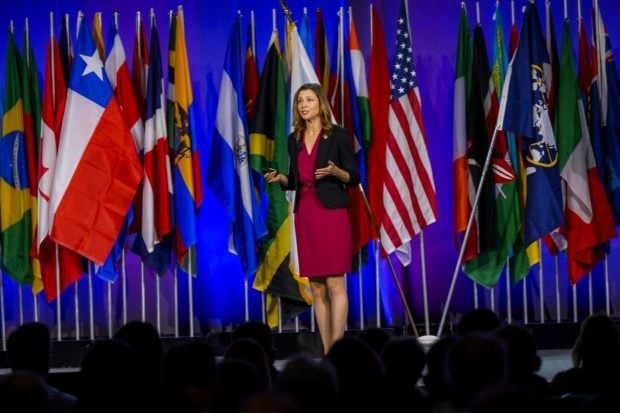MAITLAND, Fla. — A well-meaning company figured it was doing the right thing when it presented handsome recognition plaques to outstanding employees.
There was only one catch. The employees worked in Dilbert-like cubicles and really had no place to display the plaques.
Another firm, although small, set aside a sizeable amount of money for staff recognition days, presenting logo merchandise and staging a fancy dinner. But the employees confided in each other that they would rather have received a $50 certificate to a local supermarket.
Recommended For You
On the positive side, another company held a leadership seminar for promising employees. They reacted very favorably because it was something they could use that would help them individually. They were carefully chosen for the program, their peers were impressed, and the next year other employees worked diligently to be selected. It was a win-win situation because employees who weren't selected worked harder the following year.
Still another positive example involves an employee-of-the-month program. The current recipient picks the next one. The process assures nobody receives the honor twice in a row, and often peers make excellent choices because they are very aware of who is actually contributing to the company and who is not. The last workday before the next month, the award simply appears on the recipient's desk.
Mimi Hull, owner of Hull & Associates training and consulting firm, cited these examples to underscore the point that recognizing employees isn't as simple as calling the printer and arranging to run off handsome certificates or handing out expensive pens engraved with the company logo.
"Employee recognition programs are effective," she stated, "but you have to match the recognition program to the employee. You have to be careful they don't get bored. That's when they tend to get cynical–when you do the same thing over and over again or the same people keep winning."
You also have to keep in mind different age groups and the employee's rank in the company, Hull continued.
"Baby boomers don't need as many recognition programs. They're very self-motivated, they're very loyal to the organization, and they just want to make sure they're appreciated, especially in down times," she said.
"On the other hand, if you look at your Gen Xers and Gen Ys, if you're not recognizing their work they'll leave. The recognition they want is something that is going to help them career-wise–for example, an opportunity for training. They're very much into that. How can I grow? How can I prepare myself for my next job? Training is very, very important to that generation. They want fresh challenges. Give them something new, something different."
Successful rewards can also vary according to the personality of the employee. An employee who is relationship-oriented may be very pleased with an invitation to lunch or a congratulatory note sent from the company to their family. Someone who is achievement-oriented may look for a new job assignment with increased responsibility.
Hull offered a formula indicating four informal awards equal one formal award. An informal award may simply be an attaboy, nice-going comment from a supervisor. More formal recognition may involve taking an employee to lunch. A lot depends on the organization and the company culture.
Another important factor is making certain the recognition program is fair. Set criteria for what it will take to achieve the recognition. It has to be high enough to be motivating but not so high it's impossible.
Instead of handing out what she called trinkets and toys, Hull suggested employers invite valuable staff members to a meeting where they get a feel for what's happening. Make certain they realize they are respected by their manager. Instead of that engraved pen, allow them to go home early on a Friday. The manager can say, "Let me take this job away from you so you can leave early."
Of course, at credit unions, board members are unpaid volunteers. Often their recognition may consist of being sent to a major convention where they can enjoy meeting representatives from other credit unions and attending sessions on issues that concern them.
Hull loves the idea.
"I think that's very good," she declared. "It's very valuable. It helps the board member because they can use the information they obtain. Often, if you're on one board, you're on multiple boards. The person can take that information and transfer it to another venue."
© 2025 ALM Global, LLC, All Rights Reserved. Request academic re-use from www.copyright.com. All other uses, submit a request to [email protected]. For more information visit Asset & Logo Licensing.







